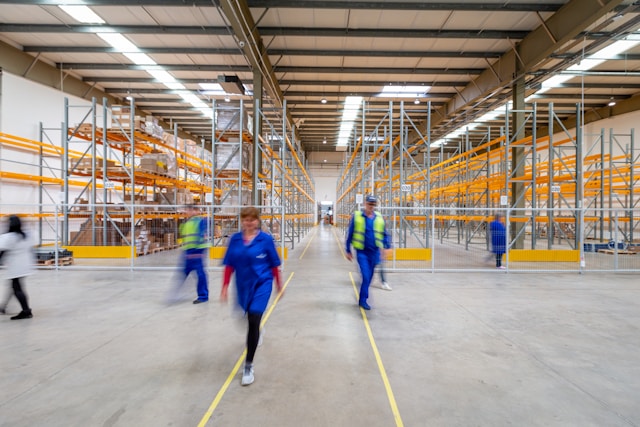Key Takeaways:
- Warehouse painting is a vital investment for the maintenance and longevity of a facility.
- Proper paint selection and application can protect structures against wear and environmental factors.
- Employing professional painting services ensures quality work that promotes safety and boosts efficiency.
Table of Contents:
- Introduction
- Significance of Warehouse Painting
- Selection of Paint and Materials
- Protective Benefits
- Aesthetic and Functional Advantages
- Safety Considerations
- Professional Painting vs. DIY
- Maintenance and Upkeep
- Conclusion
Introduction
Warehouses are the backbone of commerce, storing many items that keep the engine of industry churning. But beyond their functional role, they are also massive infrastructures that require continual maintenance to stay operational and efficient. One of the most effective maintenance measures is painting—a vital process often overlooked. Warehouse painting is not just about aesthetics; it is a strategic investment influencing the durability and longevity of these critical facilities.
Significance of Warehouse Painting
At the core of warehouse upkeep is the necessity to protect and maintain the building’s structural integrity. Painting is a preventative measure against wear, corrosion, and decay resulting from fluctuating weather conditions and strenuous activities in such environments. A well-executed paint job acts as a shield, preserving the warehouse’s interior and exterior surfaces from the elements and daily operational damage.
Selection of Paint and Materials
Selecting the correct type of paint and materials for a warehouse is a science. The choice depends on factors such as the warehouse’s location, the types of goods stored, and the expected traffic within the facility. Epoxy coatings, for instance, are known for their durability and resistance to spills, making them ideal for warehouses that store chemicals or heavy machinery. On the other hand, reflective paints can enhance lighting efficiency, leading to energy savings and a brighter work environment.
Protective Benefits
A quality warehouse paint job delivers extensive protective benefits. It prevents the degradation of walls, roofs, and floors, mitigating the risks of costly structural repairs in the long term. Anti-microbial paints reduce the risk of mold and bacterial growth, which is vital for warehouses in food industries or humid climates. Moreover, waterproofing paint applications prevent water damage that can compromise stored goods and necessitate expensive restorations.
Aesthetic and Functional Advantages
While the protective functions of warehouse painting are paramount, the aesthetic and functional benefits should be considered. A well-painted warehouse presents a professional image to clients, employees, and stakeholders. The application of bright, uniform colors can also aid in delineating different sections of the warehouse, improving navigability and reducing the time to locate items, thereby enhancing operational efficiency.
Safety Considerations
Safety is paramount in warehouse management, and strategic painting is crucial. Using color coding on floors can highlight walkways and forklift paths, significantly reducing accident risks. Fire-resistant paints help to mitigate the spread of fire, providing crucial extra time for evacuation during emergencies. In such ways, paint is not merely a covering but a fundamental component of a warehouse’s safety protocol.
Professional Painting vs. DIY
Warehouse painting might seem straightforward, but it’s a complex job that requires professional expertise. Professional painters bring knowledge of the latest materials and techniques to handle warehouse projects’ scale and specific demands. A do-it-yourself approach may cut initial costs but can lead to subpar results that compromise the building’s longevity and may prove more expensive to rectify.
Maintenance and Upkeep
Post-painting, regular maintenance is critical to extending the life of a paint job and, by extension, the warehouse itself. This includes routine cleaning of painted surfaces to prevent dirt buildup and regular inspections to catch and address damages early. Such upkeep not only maintains the warehouse’s appearance but also reinforces the protective qualities of the paint over time.
Conclusion
In summary, warehouse painting is essential to maintaining the functionality and safety of these critical commercial spaces. Investing in a professional paint job with suitable materials offers many benefits, from protective and aesthetic enhancements to operational and safety improvements. With appropriate maintenance, the longevity of the paintwork and the warehouse can be greatly extended, ensuring that the facility remains an energetic hub of productivity for years to come.

